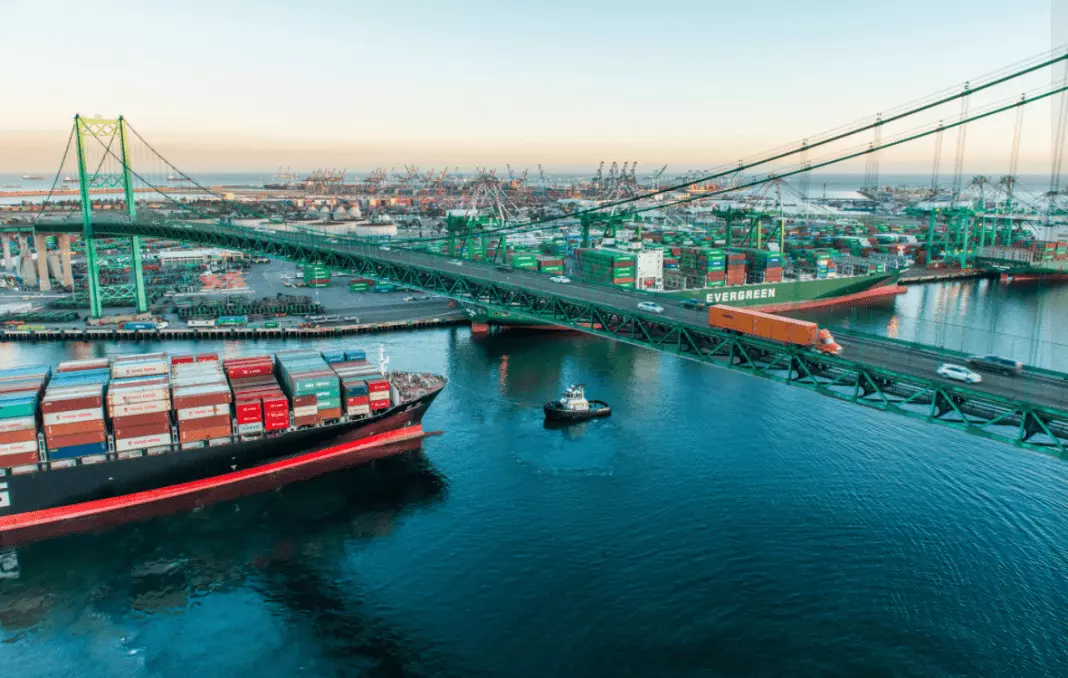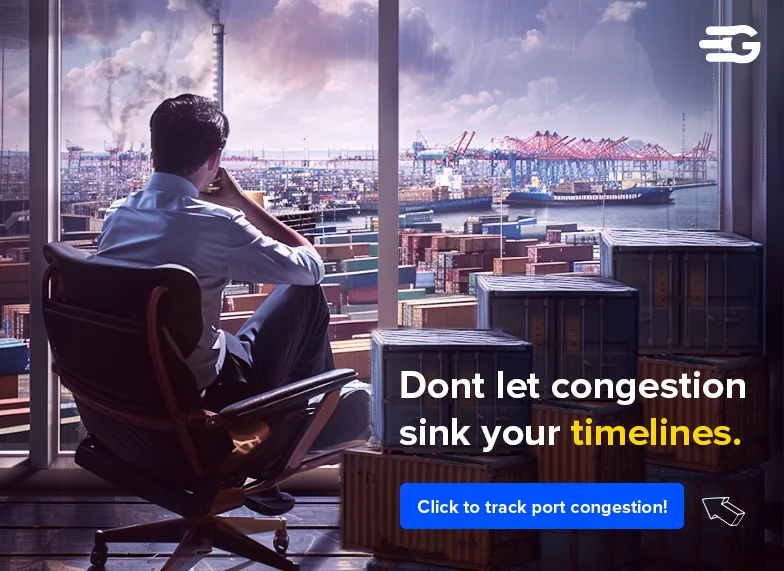Top 14 Busiest Container Ports in the United States – GoComet
Explore the pulse of American trade with the Top 14 Busiest Container Ports in the United States, meticulously curated by GoComet. These ports aren’t just logistical hubs; they’re economic powerhouses shaping global commerce. From the towering cranes of Los Angeles to the bustling terminals of New York, each port tells a tale of innovation, resilience, and opportunity.
Dive into the intricate web of maritime logistics, where every container represents a connection to markets far and wide. Gain insight into the strategic significance of these ports, not just in terms of cargo volume but also in their impact on regional development and international trade relations.
With engaging analysis and compelling narratives, we invite you to immerse yourself in the dynamic world of container shipping. Whether you’re a seasoned industry professional or an eager enthusiast, there’s much to discover and learn as we unravel the vibrant tapestry of America’s busiest container ports.
1. Port of Los Angeles, California
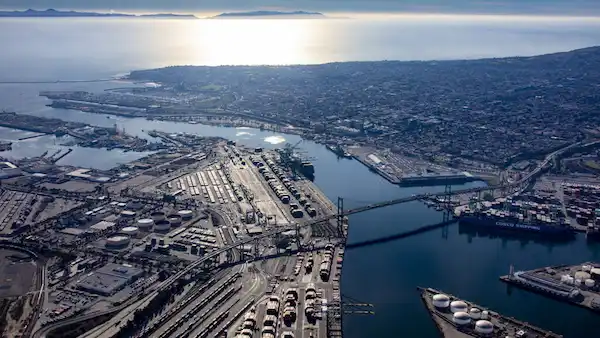
Port of Los Angeles, aerial view looking south toward Catalina Island | Image credits: POLA
Also known as America’s Port, the Port of Los Angeles (POLA) is one of the world’s busiest ports and has sustained its rank as number one in North America for more than two decades with record volumes for containerized trade. The Port of Los Angeles is the 17th busiest container port in the world. With 25 cargo terminals, 43 miles (69.2 km) of waterfront and 116 miles (186.68 km) of rail, the major Californian gateway handles 20% of all incoming cargo for the U.S. making it one of the biggest ports.
Key Information: 10.7 million TEUs
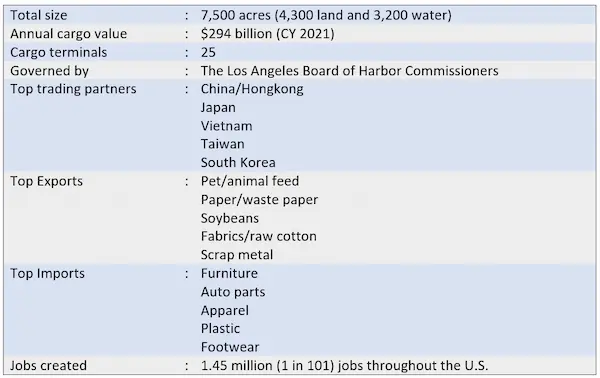
Navigate the currents of American trade seamlessly with insights from GoComet. As you explore the Top 14 Busiest Container Ports in the United States, ensure your supply chain stays afloat amidst the bustling activity. From optimizing routes to streamlining operations, our expert guidance will keep your timelines on course. Don’t let congestion sink your timelines – stay ahead of the curve with GoComet.
2. Port of Long Beach, California
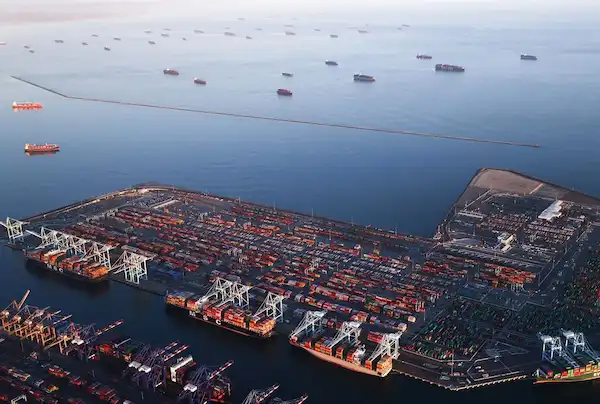
Port of Long Beach, aerial view | Image credits: POLB
The Port of Long Beach (POLB) is located in San Pedro’s Bay, right next to the Port of Los Angeles. The Port of Long Beach is the second port in the United States according to size and cargo volume throughput, and is the 21st busiest container port in the world. The port is a major gateway for the United States – Asian trade. The port is a recognized environmental leader, with forward-looking programs such as the award-winning Green Port Policy.
POLB has 22 shipping terminals, six of which handle container vessels, and serves 175 shipping lines with connections to 217 seaports worldwide. As one of the largest ports after POLA, the port’s combined import and export value is nearly $100 billion per year.
Key Information: 8.1 million TEUs
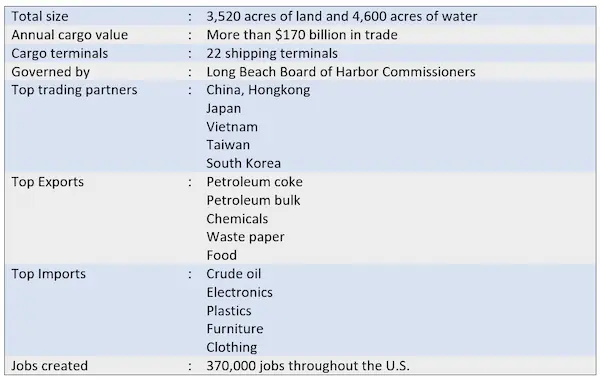
Don’t Set Sail Blindly: Plan Your Shipment’s Arrival with Weekly Port Dwell Data!
3. Port of New York and New Jersey, New York
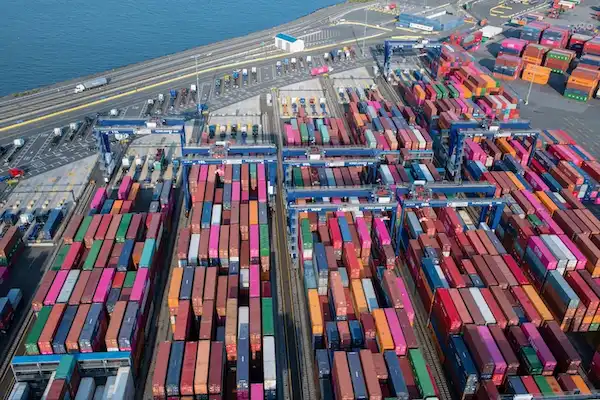
Port of New York and New Jersey | Image credits: Nick Souza
Ports are a vital part of a country’s economy. Around 90% of all the world’s trade happens by sea, and the role of ports in keeping the world’s goods moving is more than significant. Out of the world’s major container ports, some of the busiest ports are in the United States. These major US ports play a crucial part in facilitating global trade. The busiest U.S. container ports are responsible for the safe handling of billions of dollars of cargo and generating hundreds of thousands of employment opportunities, making them major economic centers. Global trade is maneuvered by these top US ports.
The Port of New York and New Jersey is the largest container port on the East Coast of the United States. This bi-state seaport receives 72 percent of the first port of call. The Port of New York and New Jersey have pioneered modern container shipping. It consists of a complex of approximately 386 km of shipping channels, anchorages, and port facilities. The port has six container terminals, which can handle nine 14,000TEU vessels simultaneously.
A major economic engine for the region and the busiest port on the East Coast, it has become the largest port in the US by volume of maritime cargo.
Key Information: 7.4 million TEUs
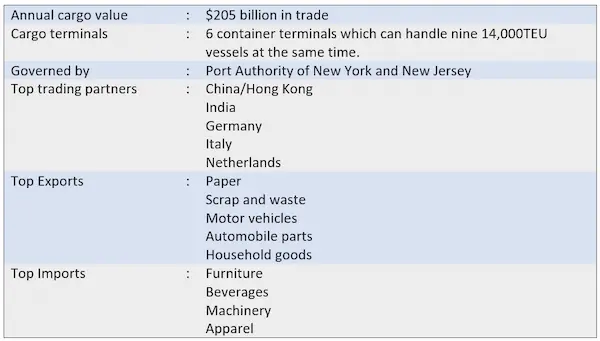
4. Port of Savannah, Georgia
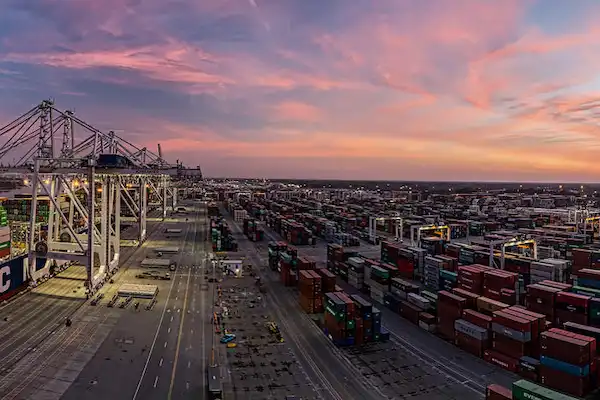
Ship-to-shore cranes load and unload vessels at the Georgia Ports Authority Garden City Terminal, in Savannah, Ga. (Georgia Ports Authority/Stephen B. Morton)
The Port of Savannah of the Georgia Ports is the fourth-busiest port in the U.S. The largest single-terminal container facility in North America is the Port of Savannah, which moved 4.6 million TEU in 2020. It is estimated that this number will be increased by 2023, as the port’s container annual capacity will grow by 750,000TEU. The port’s new Jasper Ocean Terminal will be the biggest port in the country when it’s ready to operate by 2035. The port has warehouses or distribution centres for major corporations like Heineken, IKEA, and Target.
Key Information: 4.6 million TEUs
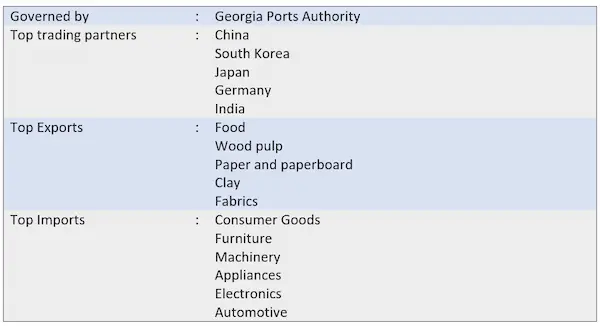
5. Port of Seattle and Tacoma, Washington
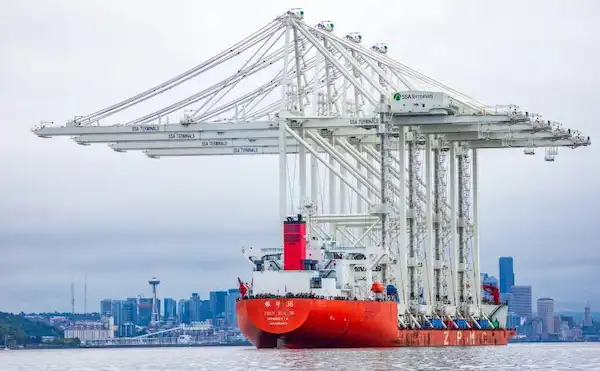
Port of Seattle new cranes | image credits: www.portseattle.org
The Port of Seattle and Tacoma, called the Northwest Seaport Alliance (NWSA), was officially established in 2015 as a result of the merger of Washington state’s largest ports of Seattle and Tacoma. In 2015, NWSA became the third-largest port in terms of cargo handling in America.
The combined ports of Seattle and Tacoma are a crucial gateway for Asia-Pacific trade, providing valuable access to foreign markets to manufacturers and agricultural producers throughout the region and the nation. Marine cargo operations at NWSA facilities support over 58,000 jobs.
Joint operations of the port of Seattle and Tacoma with the formation of NWSA, makes it the third largest port cargo gateway in the United States.
Key Information: 3.74 million TEUs
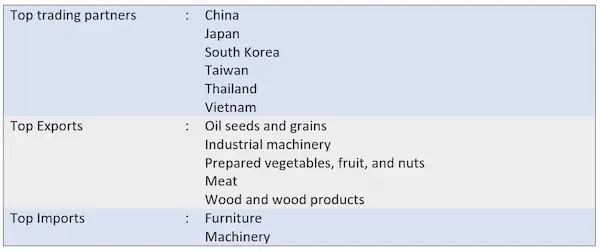
6. Port Houston, Texas
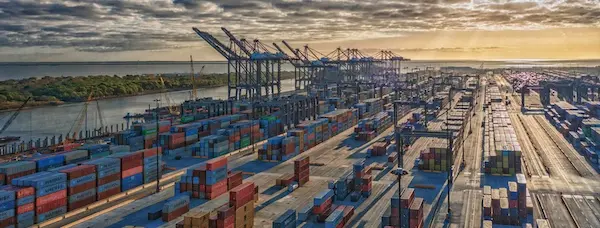
Port Houstan | Image credits: porthouston.com
The country’s busiest port for foreign waterborne tonnage, the Port of Houston is the sixth-busiest port in the U.S. It is also the largest container port on the U.S. Coast Gulf. The Houston Port handles 52 percent of project cargo among ports in the region. The 50-mile-long port has over 200 public and private terminals.
The port provides direct and indirect employment to 3.2 million people. The port includes two container terminals and is home to the largest petrochemical manufacturing complex in the U.S. Petroleum, and petroleum products are leading import and export commodities. One of the current focus areas for Port Houston is the NeoPanamax expansion.
Houston is one of the top ports for international trade in the United States. It has 31% of trade volume with Europe, 22% with Latin America, 15% with APEC, 12% with Africa and 7% with the Middle East.
Key Information: 3.5 million TEUs
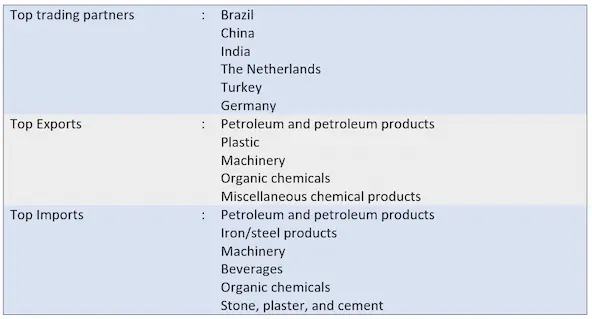
7. Port of Virginia, Virginia
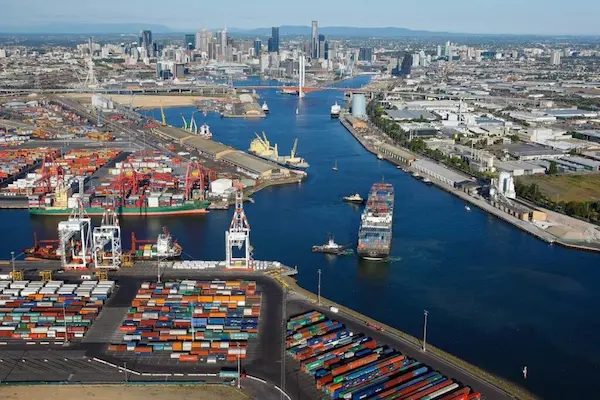
Port of Virginia | Image credits: Portofvirginia.com
One of the East Coast’s busiest ports, the Port of Virginia is the seventh-busiest port in the United States. Growing at an annual rate of 2.6 percent for five years, the port is planning to handle more cargoes in the future. The expansion of the container terminals Norfolk International Gateway and Virginia International Gateway in 2020 increased the overall capacity of the Port of Virginia by 40%, which translates to 1 million TEU annually. The port provides 397,000 direct and indirect employment.
Key Information: 2.85 million TEUs
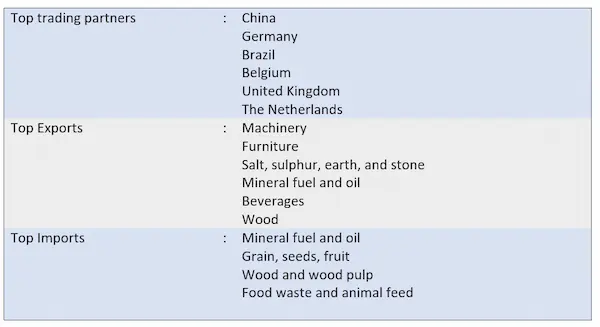
8. Port of Oakland, California
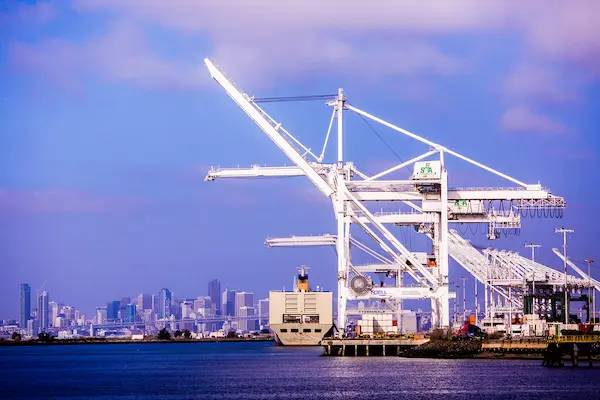
Port of Oakland | Image credits: Flickr/ Thomas Hawk
Located in the San Francisco Bay, the Port of Oakland is the eighth-busiest port in the United States. The port oversees 1,300 acres of maritime-related facilities serving a local market of over 14.5 million consumers. It was the first major port on the Pacific Coast of the United States to build terminals for container ships.
The Port of Oakland ranks among the four largest Pacific Coast ports for container cargo, after the ports of Los Angeles, Long Beach, Seattle, and Tacoma (NWSA). The port moves more than 99% of the containerized goods through Northern California.
Key Information: 2.4 million TEUs
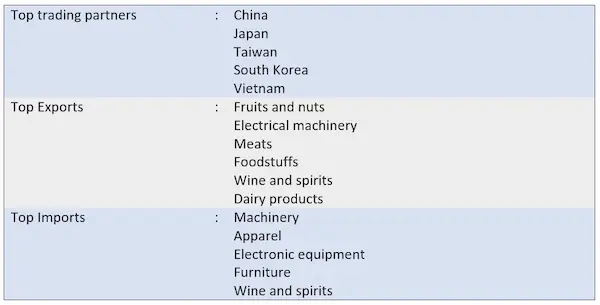
9. South Carolina Ports, South Carolina
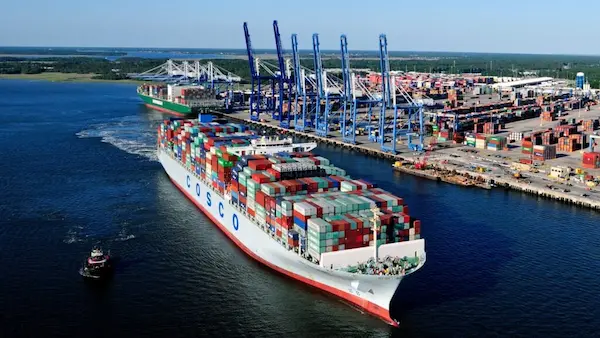
South Carolina Ports, inland terminal | Image credits: South Carolina Ports Authority
Including the Port of Charleston and another four major ocean terminals, South Carolina Ports (S.C. Ports) ranks ninth among the busiest ports in the United States. The S.C. Ports owns and operates the Port of Charleston, Port of Georgetown, Inland Port Greer, and Inland Port Dillon. The South Carolina ports directly or indirectly provide 10 percent of all jobs in the state.
Key Information: 1.9 million TEUs
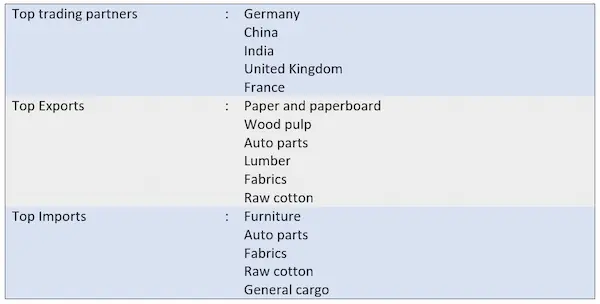
10. Port Miami, Florida
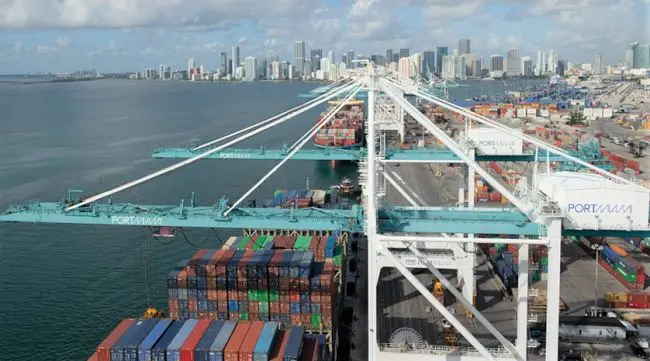
Port Miami
Known as the Cruise Capital of the World, Port Miami is one of America’s fastest-growing global gateways. It is the largest passenger port globally and one of the largest cargo ports in the United States. Its consistent cargo growth reflects over 1 million TEU for five years in a row. The port contributes more than $43 billion annually to Miami-Dade County’s local economy and supports over 334,500 jobs in Florida.
Key Information: 1.25 million TEUs
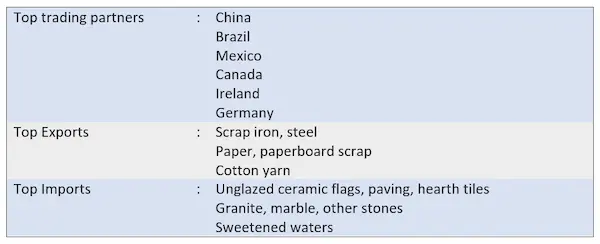
11. Port Baltimore, Maryland
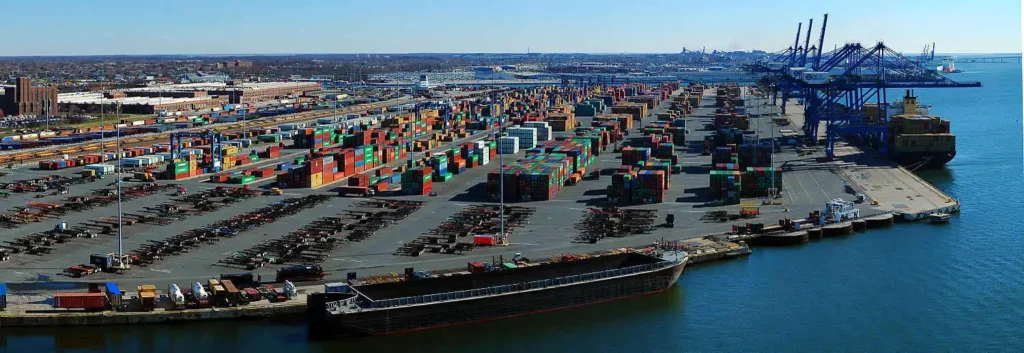
Baltimore’s Helen Delich Bentley Port is located along the tidal basins of three branches of the Patapsco River on the upper northwest shore of Chesapeake Bay. It is the nation’s largest port facilities for specialized cargo (roll-on/roll-off ships) and passenger facilities.
There are currently major ro-ro (roll-on roll-off) facilities as well as bulk handling facilities, especially for steel. Around 700,000 vehicles pass through the port each year. In addition, Mercedes-Benz imports are handled here as well.
A review of 36 ports in the USA showed that the Port of Baltimore was ranked 11th largest port in tonnage handled by foreign ships and 9th in dollar value of cargo handled.
Key Information: 2.5 Million TEUs
| Governed By : | Maryland Port Administration |
| Cargo Terminals : | 5 terminals area located in the Maritime Industrial Zoning Overlay District |
| Top Trading Countries : | India, Japan, Netherlands, South Korea, Brazil, China, UK |
| Top Exports : | Waste paper, Wood pulp, Ferrous scrap, Agriculture equipment |
| Top Imports : | Salt, Sugar, Furniture, Aluminum, Slag |
12. Port of Wilmington
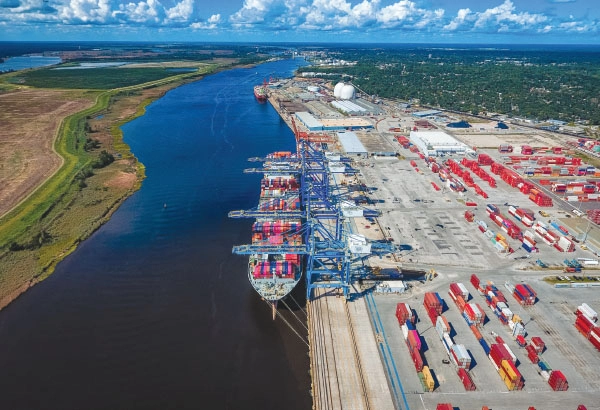
Located at the confluence of the Christina River and the Delaware River in Wilmington, Delaware the port has been ranked as one of the top ports for imports of fresh fruit, bananas, and juice concentrate, and as having the largest dock-side cold storage facility in North America.
The port is also a C-TPAT certified location and is designated as Foreign Trade Zone. With its capability to handle complex cargo, the port is ranked among the top US ports.
Key Information: 6 Million TEUs
| Top Trading Countries : | Saudi Arabia, Netherlands, UK, Belgium, Honduras, China |
| Special Facilities : | Dry warehouse space and six temperature controlled warehouses totaling 816,000 square feet |
| Top Exports/Imports : | Fresh fruits, Bananas, Automobiles, Forest products, Petroleum |
13. Port of Beaumont, Texas
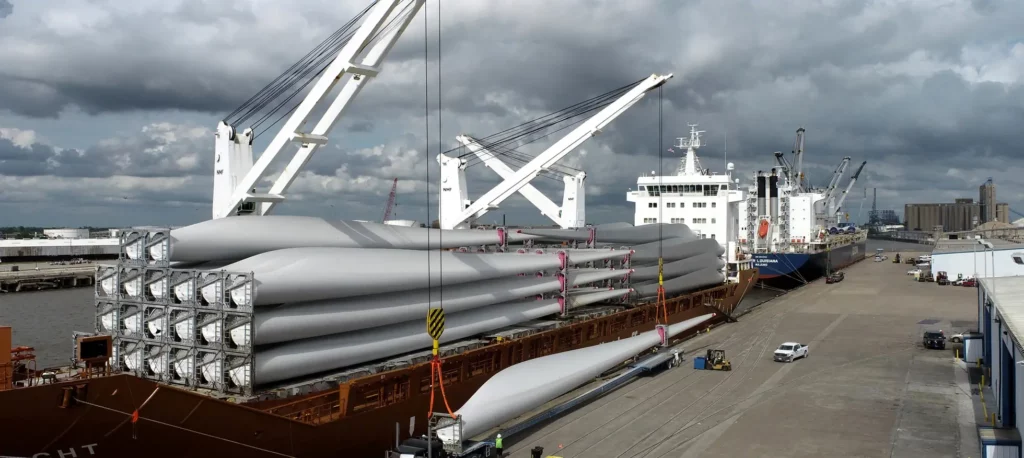
The Port of Beaumont is a political subdivision of the State of Texas and operates as a hybrid (operational and landlord) deep draft port.
It is the fourth busiest port in the United States and the forty-seventh busiest in the world in terms of tonnage, according to the American Association of Port Authorities.
Additionally, it serves as headquarters to the United States Army’s 842d Transportation Battalion, which specializes in port logistics, and is the world’s busiest port for processing U.S. military equipment.
Key Information: 9 Million TEUs
| Top Trading Countries : | Mexico, China, South Korea |
| Top Exports : | Bulk grain, Iron and steel, Crude oil, Gasoline, Bagged Goods |
| Top Imports : | Eucalyptus pulp, Aggregate, Wind turbine components, Metal articles |
14. Port of Cleveland, Ohio
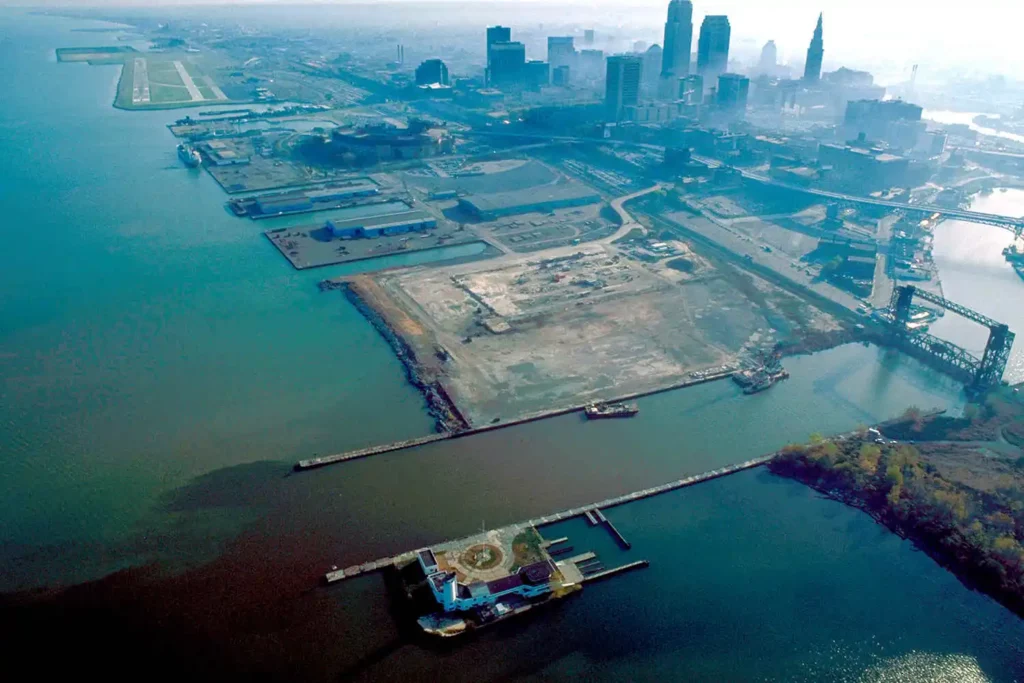
The Port of Cleveland is a bulk freight and container shipping port at the mouth of the Cuyahoga River on Lake Erie in Cleveland, Ohio. It is the third-largest port in the Great Lakes and the fourth-largest Great Lakes port by annual tonnage, also the only container port on the Great Lakes, with bi-weekly service between Cleveland and Antwerp on a service called the Cleveland-Europe Express.
Each year, roughly 13 million tons of cargo move through Cleveland Harbor, supporting over 20,000 jobs and $3.5 billion in economic activity. The Port of Cleveland is the Grantee of Foreign Trade Zone where companies can use special customs procedures to encourage U.S. activity and value added – in competition with foreign alternatives – through delayed or reduced duty payments on foreign merchandise, as well as other savings.
Key Information: 11 Million TEUs
| Special Facilities : | Eight international cargo berths and docks consist of 110 acres |
| Top Trading Countries : | Canada, Germany, Singapore, China, Netherlands |
| Top Exports : | Steel, iron ore, limestone, cement, salt, and machinery |
| Top Imports : | Heavy machinery, iron ore, limestone, liquid/dry bulk |
The country’s busiest port for foreign waterborne tonnage, the Port of Houston is the sixth-busiest port in the U.S. It is also the largest container port on the U.S. Coast Gulf. The Houston Port handles 52 percent of project cargo among ports in the region. The 50-mile-long port has over 200 public and private terminals. The port provides direct and indirect employment to 3.2 million people. The port includes two container terminals and is home to the largest petrochemical manufacturing complex in the U.S. Petroleum, and petroleum products are leading import and export commodities. One of the current focus areas for Port Houston is the NeoPanamax expansion.
Discover how you can optimize your supply chain at the busiest ports with our intelligent port congestion tool
